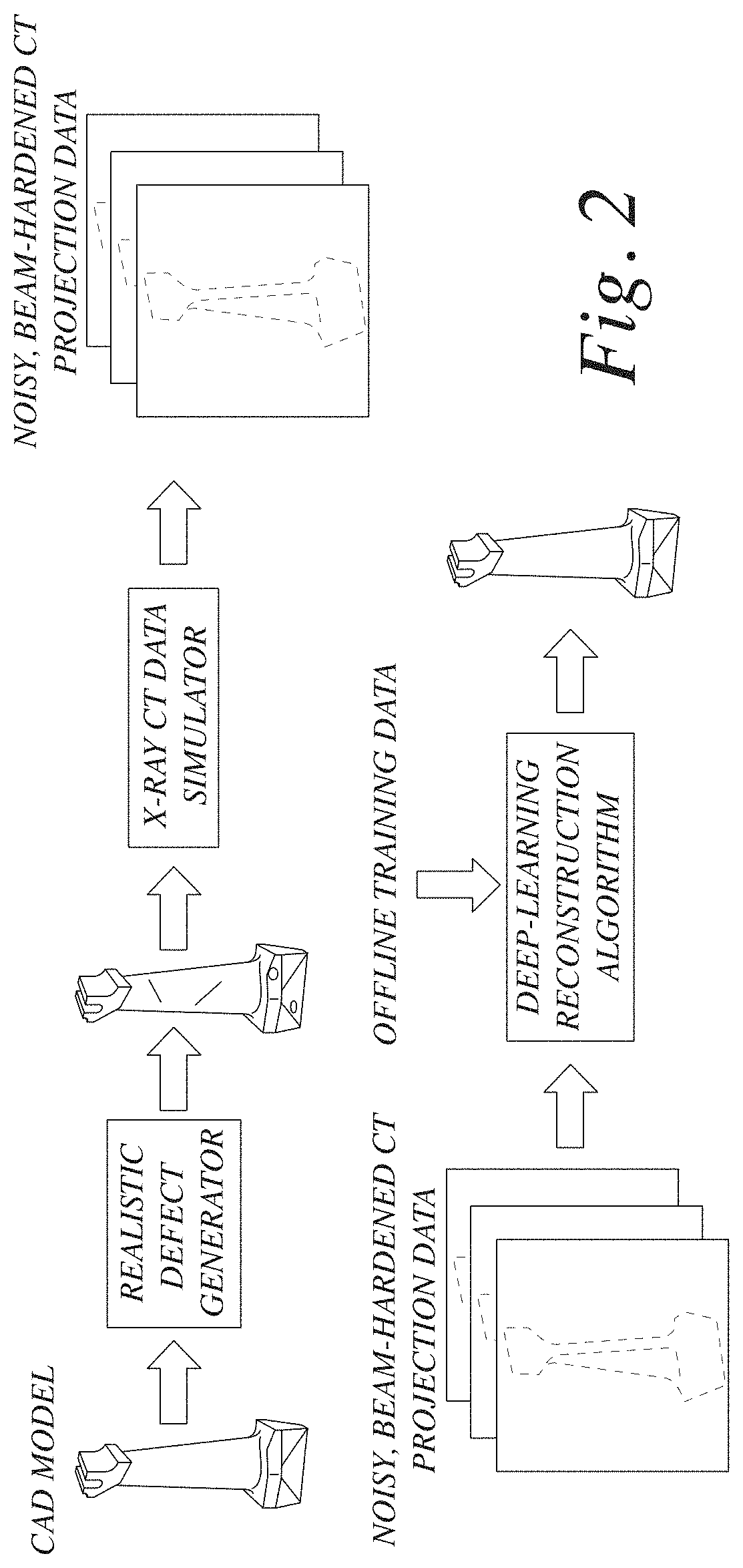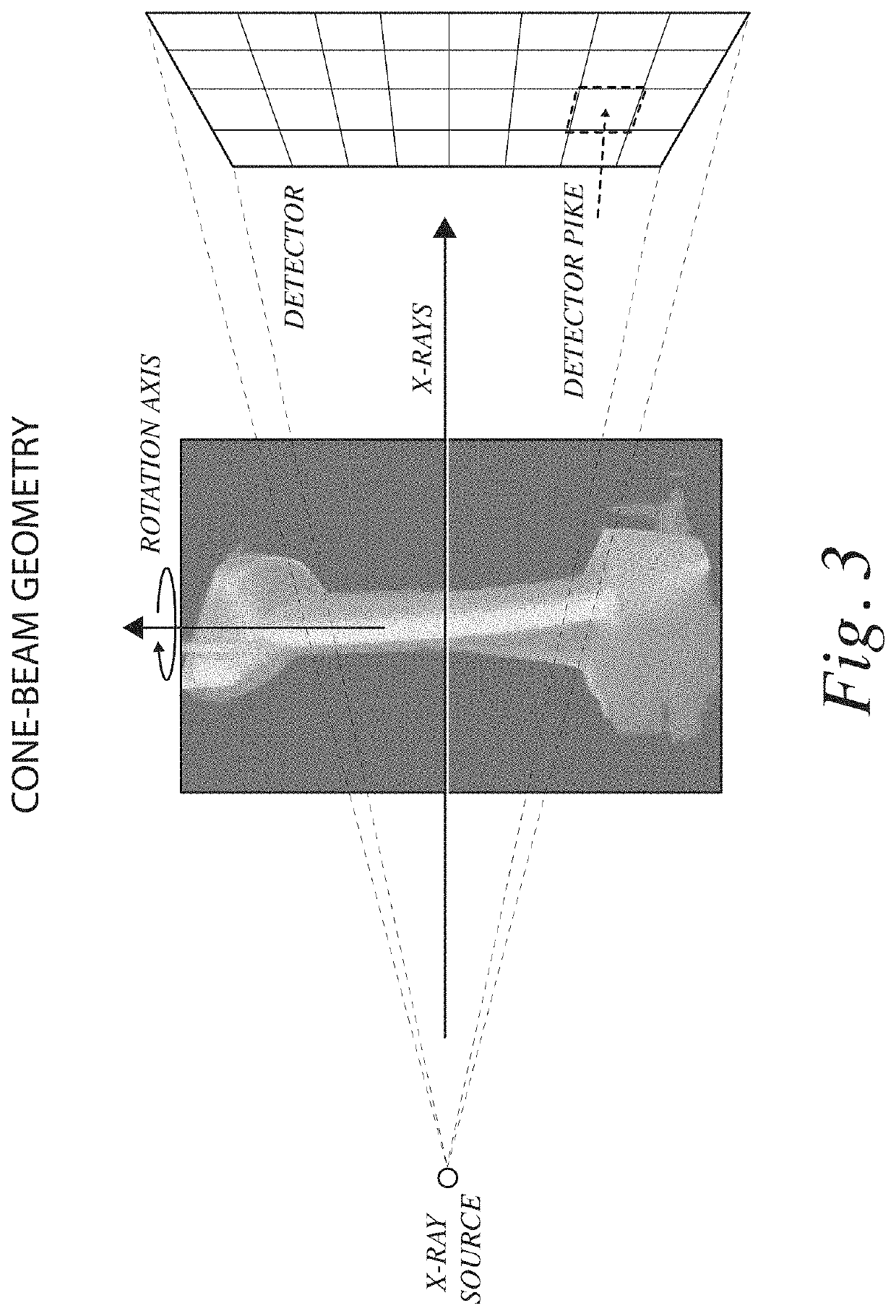System and method for artifact reduction of computed tomography reconstruction leveraging artificial intelligence and a priori known model for the object of interest
a computed tomography and artifact technology, applied in the field of systems and methods for reducing artifacts in computed tomography reconstruction, can solve the problems of affecting the qualification of manufactured parts, difficult ct of thick dense parts, and complicated process, and achieve the effect of reducing artifacts in ct reconstructed images
- Summary
- Abstract
- Description
- Claims
- Application Information
AI Technical Summary
Benefits of technology
Problems solved by technology
Method used
Image
Examples
Embodiment Construction
[0040]The present disclosure is generally directed to a novel framework based on using computer aided design (CAD) models, i.e., a priori known model, for an object of interest, accurate computed tomography (CT) simulations, and a deep neural network (DNN) to produce high-quality CT reconstructions from data that has been synthetically produced to include simulated artifacts caused by CT scanning, such as detector noise and beam hardening. In particular, many of the embodiments of systems and methods of the present disclosure involve CAD models of the parts, introduction of typical defects, and simulation of CT measurements that include a model for beam hardening and detector noise. These simulated measurements can be processed with common CT reconstruction algorithms, which result in artifacts. Then, a deep learning model can be trained on the pairs of reconstructed volumes, with artifacts and ground truths derived from the CAD model, to learn a fast, nonlinear mapping function. Th...
PUM
 Login to View More
Login to View More Abstract
Description
Claims
Application Information
 Login to View More
Login to View More - R&D
- Intellectual Property
- Life Sciences
- Materials
- Tech Scout
- Unparalleled Data Quality
- Higher Quality Content
- 60% Fewer Hallucinations
Browse by: Latest US Patents, China's latest patents, Technical Efficacy Thesaurus, Application Domain, Technology Topic, Popular Technical Reports.
© 2025 PatSnap. All rights reserved.Legal|Privacy policy|Modern Slavery Act Transparency Statement|Sitemap|About US| Contact US: help@patsnap.com



